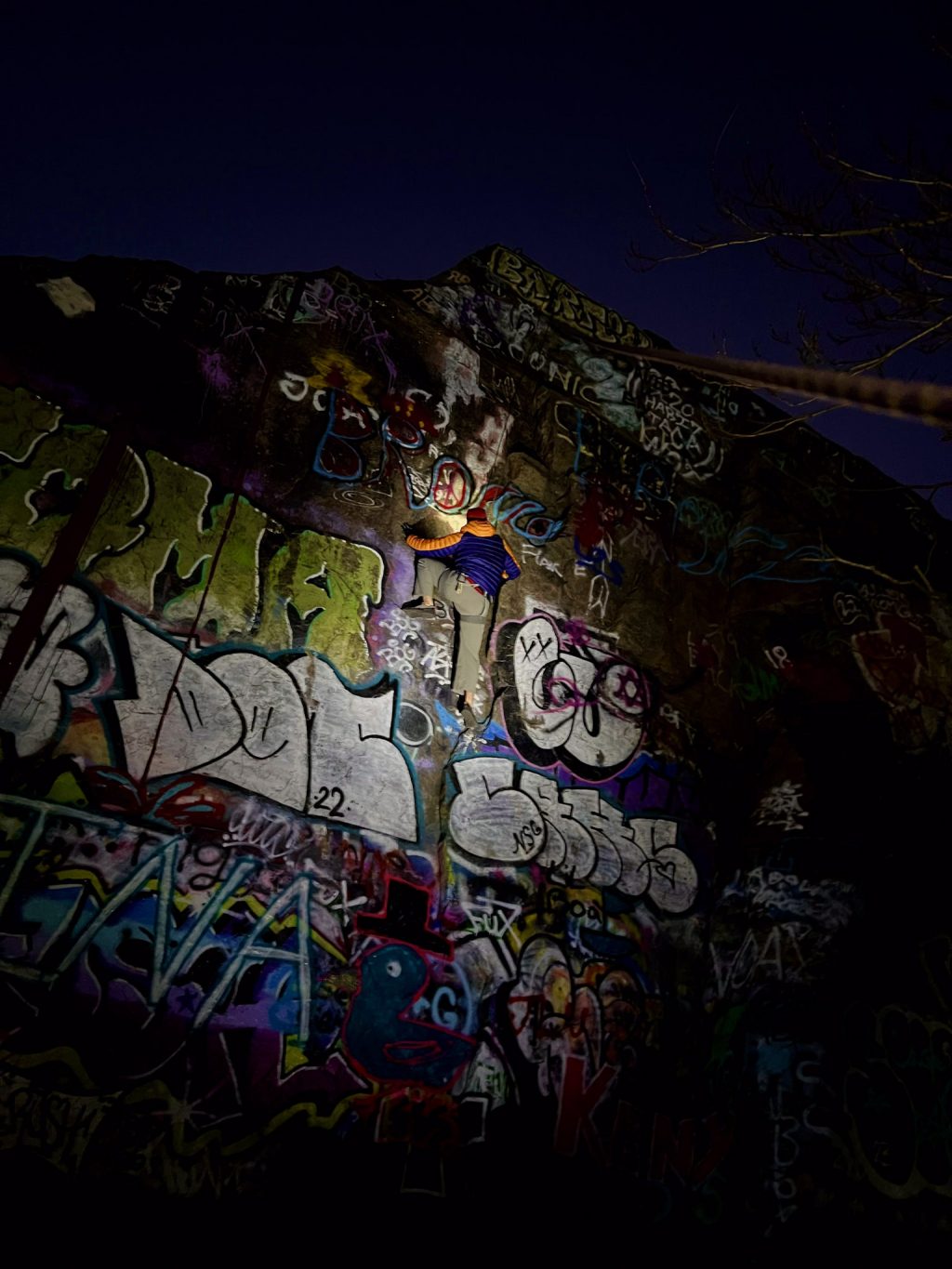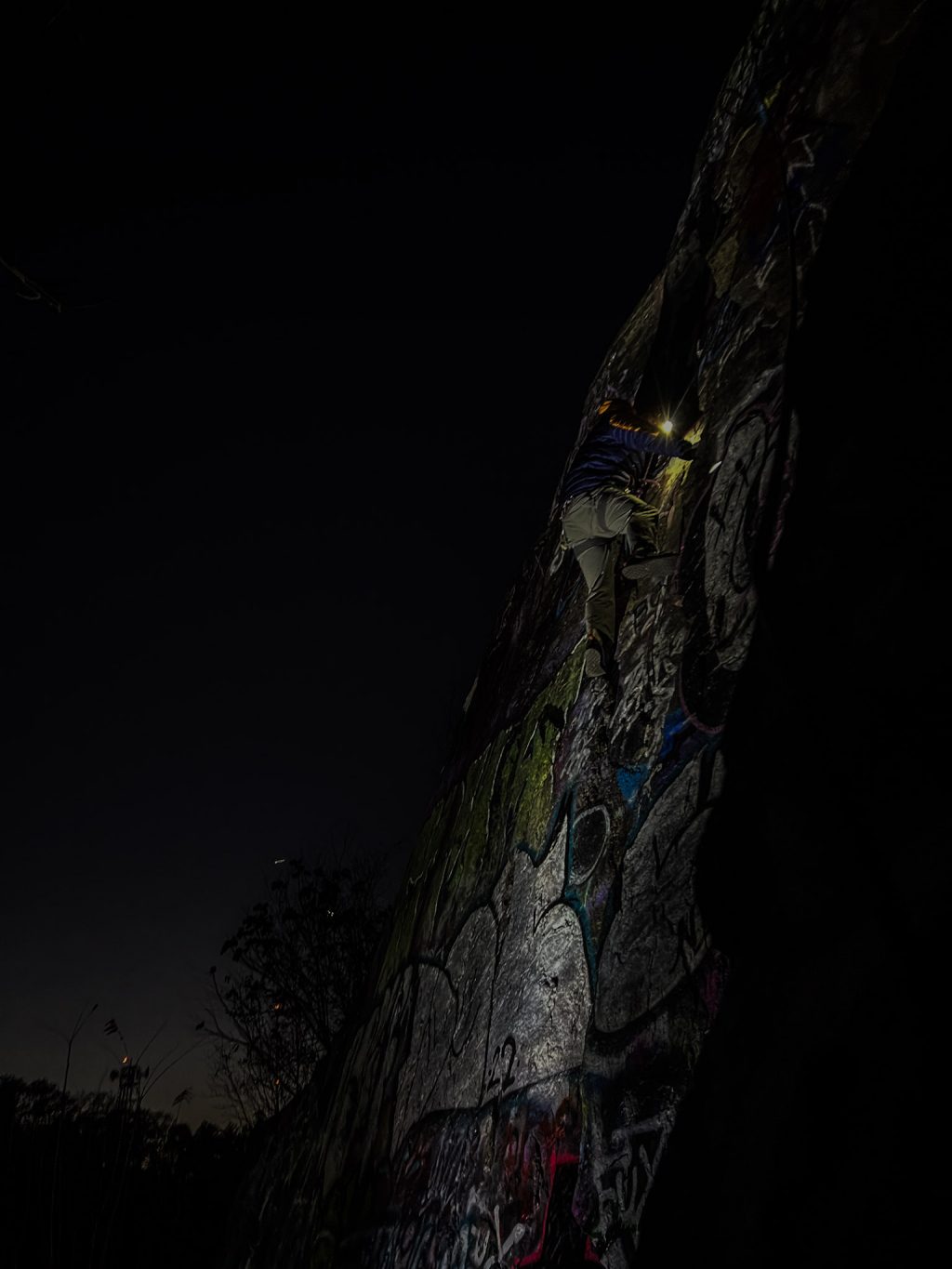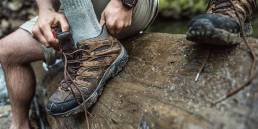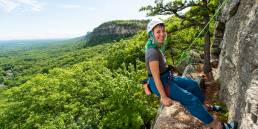With the sun setting before many of us get out of work and ice season still a few weeks away (if not more) it’s challenging to keep your climbing skills sharp this time of year. Sure, there’s the rock gym, but the weather is still pleasant enough to get outside and there’s a long winter of pulling plastic ahead. Thankfully, the combination of the right lights and dialing in a strategy makes it easier than ever to climb at night.

Why Consider Climbing at Night
I remember the ordeal of climbing at night not too long ago—scanning a seemingly blank face above, searching for a key crimp while my feet skittered below looking for a foothold I knew was there but couldn’t quite locate. Not helping matters was that the 100-lumen headlamp I was using was woefully underpowered, despite it being top-of-the-line at the time. Further hindering upward progress was the headlamp’s bulky battery pack which shifted every time I moved my head too quickly, drawing the limited beam from where I was looking into the unknown.
Fortunately for today’s climbers, lighting has come a long way over the past years. Even budget headlamps now greatly surpass the 100 lumens of light my at-the-time-cutting-edge headlamp was pumping out. Equally impressive is that they’re doing it while keeping headlamps small, light, and without the need for bulky battery packs. Most even have a rechargeable option, so you’re not burning your budget on batteries. Dirtbags rejoice!
Another game-changing advancement for climbers is rechargeable LED work lights. Bright, portable, and made to illuminate dark places, these lights are an excellent addition to any night climber’s kit.
Lighting for Night Climbing
For the past few years, I’ve been experimenting with light setups for night climbing and have developed a few strategies that work. My most basic light setup for night climbing is a combination of a portable worklight and a headlamp. I use the work light in flood mode, directing its light at the route, and I use the beam of a headlamp to zero in on holds.
On longer climbs, I’ve attached small portable lights—battery-powered lanterns for camping are a great option—to gear or bolts to light up cruxes or tricky sequences. If you’re going to use gear or bolts to brighten up a route that you’re planning on leading, make sure it doesn’t interfere with the protection of the route or the movement of the rope. Consider placing lights on adjacent routes or stick to top roping.
If you are placing lights above the climber, make sure that they’re facing up and in flood mode.
Trust me, a spotlight blazing in your eyes from above is a sure way not to send.

Locations for Night Climbing
Climbing at night favors locations you’re intimately familiar with—everything from locating anchors for building a top rope to finding gear for going ground up is considerably more challenging in the dark. It’s also worth noting that climbing in the dark often feels more difficult than in the daylight, so prepare yourself for that 5.8 feeling more like 5.10.
A good approach for night climbing is to play it safe and stick to areas and routes you know well and save the heavy-duty adventuring for daylight. If you’re bouldering, try to stick to problems that you’ve scouted the top out and the landing in advance.
The Gear to Climb at Night
While late fall and early winter weather generally don’t deliver super-cold temperatures, climbing at night can get pretty chilly. This is especially true once the sun sets! Because of this, I think of night climbing a lot like ice climbing and make sure to pack plenty of extra layers. Stuff you’ll always find in my night climbing pack includes:
- A puffy jacket
- Gloves or mittens I can belay in
- A hat that fits under my climbing helmet
- A neck gaiter
- Hand warmers
- A backup headlamp
Pro tip: There’s no greater luxury to a cold-weather climber than a hand warmer placed in a chalk bag or bucket.

Best Practices for Rock Climbing at Night
If you’re planning on climbing at night, you’ll want to get your climbing kit dialed and have a system for staying organized. It’s very easy to misplace gear in the dark and equally troublesome to find it. I’ve gotten in the habit of carrying a gear sling and keeping all my climbing gear clipped to it when not in use. While that’s kept my carabiners and cams from disappearing, there’s still a lot of other gear to wrangle.
At the completion of a late-night ascent of a local multi-pitch climb last fall, I got back to my truck only to realize I had misplaced my phone. Without many good options, my climbing partner and I hiked back up the approach trail and reclimbed the route to search for it. We came up empty handed and rappelled the route dejected. Back at the truck (for the second time that night) and resigned to buying a new phone, I saw a glimmer on my truck’s rear cap. It was a streetlight shining off of my phone’s case. My phone had been at the truck the entire time—a goof my climbing partner won’t let me forget anytime soon.
Following that unnecessary epic, I’ve gotten in the habit of keeping all my accessories like hats, gloves, and neck gaiters in a stuff sack. If they’re not on my body, they’re in their bag. The same for my puffy—if I’m not wearing it, it’s in my pack. I’ve also made it a routine to put all my electronics in the brain (top lid) of my backpack and am done with setting my phone down on rocks or ledges.
Stay Safe and Have Fun
Climbing at night is a great way to keep your fingers strong and stay outside while others are retreating to the rock gym. Plus, you can use the night climbing skills built in the late fall/early winter all year to find solitude at busy crags or sending temps even in the throes of summer.
Luke Foley
Luke Foley is passionate about discovering and sharing hidden local treasures and has long been a New England adventure enthusiast. After all, there are only a few places where you can skin for fresh tracks in the morning and have a sunset surf session on the same day.
Related Posts
April 24, 2024
What to Bring When Road Tripping with Your Dog
Prepare for the ultimate road trip with…




